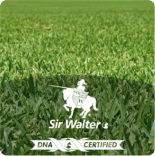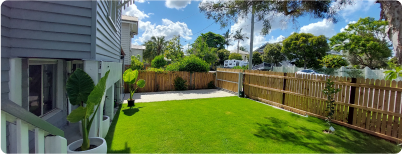Australian Summers can be wild and unpredictable and vary each year vastly. We have been served fluctuating temperatures, big storms, and high general rainfall levels last year!
This variant weather combined with the generally increased foot traffic most lawns experience over the festive season and school holidays, you'd be easily forgiven if your lawn was looking a little sad.
To help you get your lawn back to its usual glory and get ahead of any potential summer-induced issues, we have compiled the most likely problems you'll face over the summer and how to beat them.
Grass with unquenchable thirst!
Is your lawn always looking thirsty and dry despite regular watering? If this is you, you may have hydrophobic soil!
Hydrophobic soil, as the name suggests, repels moisture; this, in turn, reduces the amount of water the grass can absorb.
Because of Australia's hot, dry climate, soil can become so dry that it doesn't want to take in any water. Think of when you get new towels; at first, they struggle to absorb the water, but once a little damp, they suddenly get so much better at it. Like a dry towel, dry soil doesn't soak up water well.
But why does this happen? When your soil dries out too much, bacterial and fungal life dies off, and a waxy coating builds up on soil particles. This makes your soil repel water rather than absorb it, which means that no matter how much you water it, your lawn will be thirsty!
How do you know if your soil is hydrophobic?
First, get the hose out, then watch your soil when you water it:
- Does the water runoff across the surface?

- Does it pool on the surface?
- Is your soil dry an hour after you've watered it?
All of these are signs you need to boost your soil's ability to absorb water.
Oh no, my soils repelling water; what do I do?
Fortunately, Hydrophobic soil is relatively easy to fix! The fix is actually linked to another problem you may be experiencing with your lawn – compaction.
Lots of human traffic, variant weather etc., can cause your soil to be compacted, leading to hydrophobic soil. Signs of compaction include not just Hydrophobic soil but also bare patches, lack lustre growth,' fairy rings' and lawn fungus
Great, so my lawn is hydrophobic and compacted – HELP!!
Don't fret – we have you covered:
-
Aerate the soil; this will allow air and water to penetrate and nourish that root system more efficiently. Your lawns' roots need to 'breathe'. A smaller lawn area can be aerated manually with a sturdy garden fork. Simply insert the fork into the ground and wriggle it back and forth to fracture the soil profile. Aim for a spacing between the holes of around 8 – 10cm. To achieve adequate aeration, you may need to go over the area twice in a different direction each time (you can even get aeration sandals which make the process super easy!). A spiked roller is also helpful for lawn aeration, or you can hire a corer from your local hire place.
-
Apply a soil wetter this will rehydrate the soil profile. This will allow the water molecules to pass through the subsoil into the plant network area. You may need to apply a couple of applications of the soil wetter. We love Lawn Solutions Lawn Soaker 2L ready-to-use bottle treats up to 150m²!
- The last step in fortifying your lawn through summer is applying some Lawn Kelper to the now well-aerated soil. This will encourage micro activity within the subsoil and healthy growth. We prefer the Lawn Kelper Liquid Nutrient Package, a balanced formulation with added Trace Elements, Seaweed Kelp and Fulvic Acid. Once the other products have been applied, adding a slow-release granular fertiliser will aid and feed the plant for approximately 3 months meaning you're well and truly set as we get through the last of summer and into Autumn.
A healthy lawn delivers so many benefits, it provides a space for relaxing and kids to play, a chance to ground yourself, and it can even drop the temperature of your home's surroundings, saving energy costs. Dedicate a day to showing your lawn some love, and you'll enjoy the benefits for months (and years) to come.














